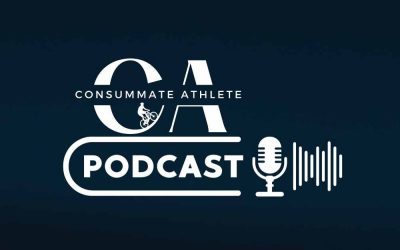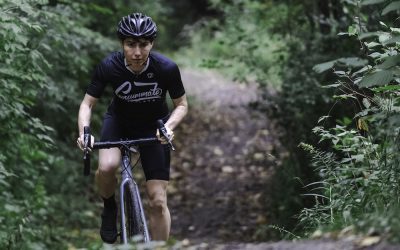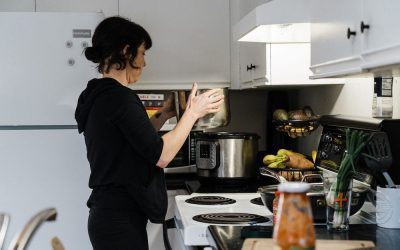Thanks to social media, it’s not just the top level athletes who are sharing their ‘food diaries’ or ‘what I eat in a day’ posts. Now, everyone is sharing them. And while some of them are impressively calorie-laden and actually fuel the work the athletes are doing, many are pretty freaking manufactured. And of course, as we say on here all the time, rarely are any of them are particularly relevant to you, your training and your lifestyle. Does it really matter what a professional cyclist is eating in a day? It’s interesting, sure, but a) you have no idea what’s going on with them behind-the-scenes, whether they’re struggling with disordered eating or RED-S, and b) you probably aren’t a pro athlete who spends the entire day focused on training and racing, so why on earth would you eat like you are? Their needs will be different than yours. And taking in more and more of these athlete food diaries creates more and more food confusion. What is healthy? What is enough? What is too much? Watch a few and you’ll end up more confused than ever, second-guessing everything you’re eating (and what you’re not eating).
I kind of thought that this trend was dead. It’s funny, I’ve had this draft saved for a long time, and every time I’ve pondered writing it again, I’ve come back to ‘but is it still relevant’? After all, my what-I’ll-call ‘trauma’ around athlete food diaries is circa 2006 or so, when I first started racing in triathlon, and was avidly reading every pro’s food diary, as published by any one of the major publications of the time. Almost every one of them went something like this:
- Pre workout: Half a banana, coffee
- Workout 1
- Breakfast: 1/2 cup of oatmeal with berries, coffee
- Workout 2, sports drink
- Lunch: Salad with grilled chicken
- Workout 3, sports drink
- Snack: Handful of almonds
- Dinner: Salmon, steamed broccoli, small potato (maybe brown rice if they were in the middle of a ‘big training block’
- Dessert: 1 square dark chocolate
Anyone else remember these? Seriously, how were ALL OF THEM eating ‘one square of dark chocolate’?! It was maddening. To this day, I’m nearly convinced that this was actually a war on new athletes being waged by high-level veterans of the sport who didn’t want any young upstarts coming in and winning, so they made all of us feel like a sub-800 calorie day was reasonable while training for an Ironman. And those food diaries made me feel like—with my love of milk chocolate and propensity to eat everything but the kitchen sink/hit up my sister for entry into the college dining hall post-workout tendencies—I was eating way, way too much.
The reality? Those lists are bullshit. I wasn’t eating too much—far from it. And even if those ‘menus’ were semi-accurate, not just a depiction of the day’s eating that an athlete thought he or she should be doing based on every other athlete’s food diary (see, self-perpetuating issue here!), they never included portion sizes. I’m willing to bet that the ‘square’ of dark chocolate looked more like a big freaking block and the sports drink was several bottles full of ultra-high cal solution if that athlete was not suffering from RED-S (though now we realize that many were, in fact, grossly under-fueling).
And athletes then and now were also hawking certain products: the early aughts saw a lot of pros swearing by Gatorade and Powerbars, but now we have adaptogens and mushroom powders. (I’m not even opposed to these products, to be clear. I’m just opposed to the narratives that these athletes tend to use around them.)
As I started interviewing pro racers a few years ago with Bicycling for the Eat Like an Elite column, and spending more time living with pro racers, I realized—in that glorious age of honesty that feels like it’s disappearing once again—most top racers aren’t doing anything wild or restrictive with their diets. They might eat more vegetables than your average American (sitting down to lunch with Tayler Wiles and Olivia Dillon, both ordered extra sides of veggies on top of their rice bowls with protein) but they also eat a ton of carbs and protein and fat to fuel their rides and their lives outside of training. And yes, nearly every pro walks the line between restricting too much at times, but when they do, they pay for it in their long-term performance.
So, this is just a reminder that if you are someone who sees a lot of this on social media or in magazines, remember:
- Ask what you’re being sold and why
- Remember that portion size doesn’t come across in a feed
- Remember that athletes and influencers aren’t always sharing everything (this isn’t even malicious on their part, it’s just human nature to want to present a certain image)
- Remember that what works for someone else will likely not work for you in the same way
- Remember that this ‘what I eat in a day’ really only shows what this person ate in that day, and might not even be accurate
- Take the good, leave the bad. If there’s a great tip on how to make a tasty salad, by all means, save and emulate. But leave behind the notion that the only ‘clean’ meal option is that salad.
Before you go, check out our book, Becoming A Consummate Athlete, right here:






